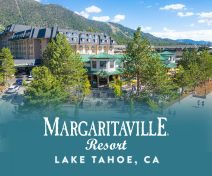HISTORY

A Place for Starting Over
California has always been a place for immigrants and entrepreneurs
By David Armstrong
ALCATRAZ ISLAND
Alcatraz dominates San Francisco Bay beyond the former Coast Guard Station, which was restored as part of Crissy Field in the Presidio—itself part of the Golden Gate National Recreation Area (GGNRA) which is the largest urban national recreational area in the USA. Alcatraz has been present in the popular culture since its time serving as a maximum-security federal prison from 1934 to 1963. Both Alcatraz Island and the Presidio of San Francisco are National Historic Landmarks.
The Spanish Franciscan friar blessing an adobe church at Mission Basilica San Diego de Alcalá in 1769; the Chilean miner trying his luck panning for gold in a cold Sierra cataract in 1849; the Chinese laborer crossing the heaving Pacific in the 1860s to work on the transcontinental railroad, completed in 1869; the African American leaving the South to build warships on the Oakland waterfront in 1942; the Haight-Ashbury hippie with her wakeful dreaming in San Francisco’s Summer of Love in 1967; the Indian engineer launching a high-tech startup in Palo Alto in 2020, all have something in common: starting over.
The United States is said to be a place where the world comes to begin again—to reinvent itself. If so, California is the “America” of America. This was so even in pre-history, when the first migrants from Asia crossed the land bridge between Siberia and Alaska, hung a right, walked southward, found pastures of plenty, rich marine life and heart-stoppingly beautiful mountains, deciding either to keep walking or to stop right where they were.
The place wasn’t called California then, of course. That came later, the name taken from a 16th-century Spanish novel and used by explorers, soldiers and missionaries, who were themselves starting over in the New World. The Spanish built 21 Roman Catholic missions, from San Diego in the south to Sonoma in the north, from 1769 to 1823. In converting native communities to Christianity, the newcomers overwhelmed native cultures. Of necessity, the Native Americans started over in a bewildering new world.
In 1821, Mexico, with its remote northernmost province, Alta California, wrenched itself free of the Spanish Empire. The missions were secularized by the Mexican government starting in 1834 leading to their decline and neglect. Their buildings moldered, their pioneering vineyards and olive groves were eventually overgrown and forgotten. Not until the 20th century were the missions restored and revived. Many flourish today as redoubts of history and contemporary worship, handsome, evocative reminders of the first major European presence.
The Gold Rush
Alta California grew steadily, shaped by its relative isolation. That changed on January 24, 1848, with the discovery of gold on the American River. The California Gold Rush, beginning in earnest in 1849, gave fortune-seekers a second—some said a last—chance to make good. Hundreds of thousands of newcomers—many from Europe, Asia, Latin America and Africa—globalized California in a hurry. The Mexican descendants of Spanish settlers—the Californios, with their sprawling ranchos and lives attuned to the slow turning of the seasons—were swept aside, left to start over.
Many 49ers stayed on and found another kind of gold: richly productive new lives in a place where beginning afresh—personally, financially, even spiritually—was already a common rite of passage. In 1850, pried loose by the U.S. victory in the Mexican War and accelerated by the Gold Rush, California became the 31st state of the United States. New Californians brought the new Golden State into being, plowing its fields, founding its great universities, building its cities.
California’s lustrous reputation was tarnished on the morning of April 18, 1906, when a massive earthquake rocked Northern California and leveled much of San Francisco. What the rolling, rumbling ground didn’t knock down, the ensuing firestorm burned down. Some 3,000 people died. Now, it was San Francisco’s turn to start over. San Francisco dramatized its recovery, and celebrated the new Panama Canal linking the Atlantic and the Pacific, with the splendidly showy Panama-Pacific International Exposition of 1915.
The Rise of Hollywood
Just two years after that optimistic display, the nation plunged into World War I. After the war ended in 1918, still more migrants rushed to California. Thomas Edison’s Motion Picture Patents Company, based in New Jersey, held tight control over motion picture cameras and who could make films. These tight restrictions stifled innovation and crippled the film industry so independent filmmakers fled to California where distance made it easier to evade litigation. The reliable sunshine and temperature also made it a more suitable place for filming year-round. In 1920, Los Angeles (and much later San Diego and San Jose) surged past San Francisco in population. The orange groves and dusty byways of old Los Angeles began morphing into “LA”—more specifically, and more mythically, “Hollywood.”
Actors, writers, directors and producers streamed to Los Angeles, growing a quiet cottage industry of silent motion pictures into a technologically advanced business. Stars were born in a place that came to be called “the dream factory.” Not a few of the Dust Bowl migrants who left the drought-stricken Midwest for California in the 1930s got their first impressions of their new home from the dream-weavers of Hollywood. In the 1940s, creative people from Europe such as Billy Wilder and Thomas Mann, fleeing fascism and war to begin anew, lent the movies an Old World artistic sensibility.
California’s story since World War II has featured growth and more growth. Combined with in-country migration, global immigration made California the most populous state in the Union in 1963.
A Center for Change
From the 1960s on, California has been, in a positive sense, the most disruptive state in the nation. Student political activism, the hip counter-culture and early awakenings of the New Age movement, found fertile ground in California. The in-season, sustainable, slow-food movement arguably took root fastest in California. The state became a hub for American environmentalism when Scottish immigrant John Muir founded the Sierra Club in San Francisco in 1892. He later took President Theodore Roosevelt camping amid the natural wonders of Yosemite Valley in 1903.
From the 1980s on, Silicon Valley has joined Hollywood as a creative lodestar for the whole planet. In the present decade, Silicon Valley reached northward, dramatically transforming the economy and even the culture of San Francisco. The high-technology world has enshrined risk-taking, innovation, learning from failure and—you guessed it—starting over. Quoting another California innovation, the 1960s Whole Earth Catalog, Apple’s Steve Jobs urged Stanford University graduates in a commencement speech in 2005 to “stay hungry, stay foolish.” Californians, across centuries and cultures, always have.
Pop Culture Icons
California has long been embedded in the popular culture of the USA and, indeed, much of the world. Among the pop culture favorites created in California are the Frisbee, the Barbie Doll, skateboards, fortune cookies and denim jeans.

Nature’s Extremes
The highest point in the continental United States, 14,505-foot Mount Whitney, and the lowest point, 282 feet below sea level in Death Valley, are about 100 miles apart in Southern California.

















